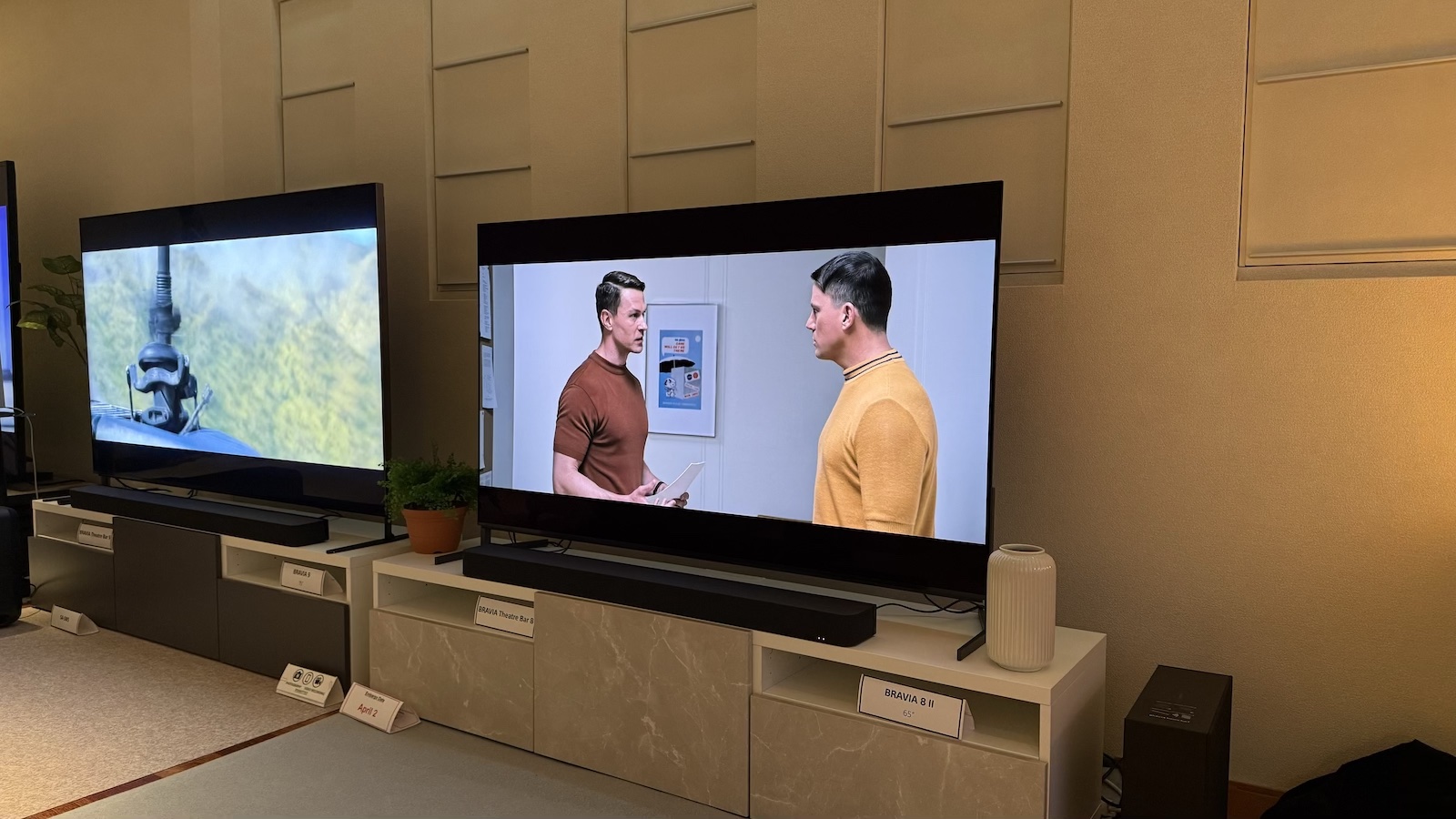LG G5 vs Panasonic Z95B: which OLED TV should you buy?
Two of 2025's most technically advanced TVs go head-to-head in the ultimate OLED head-to-head
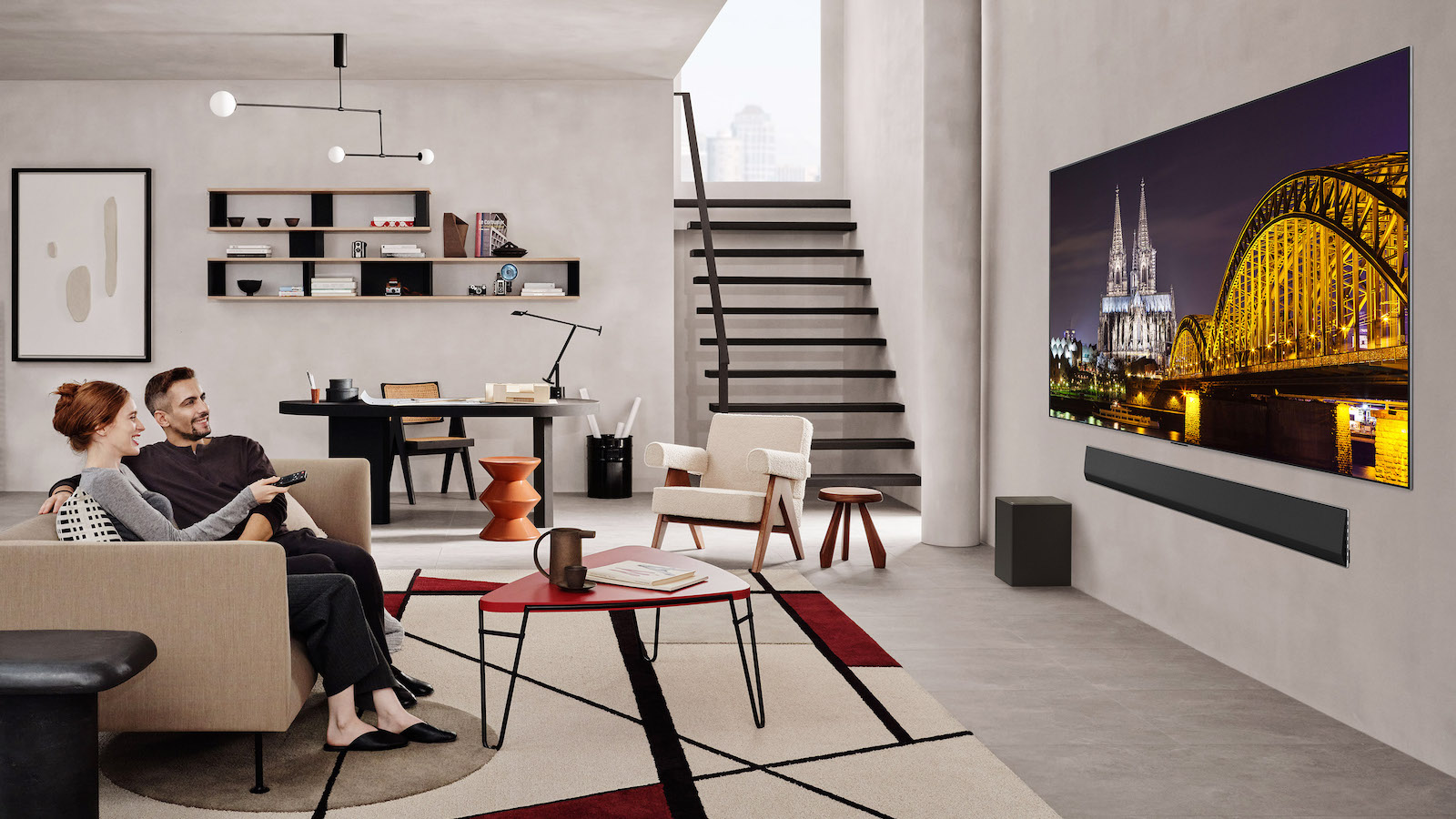
LG and Panasonic have unveiled their flagship OLED TVs for 2025 – the LG G5 and Panasonic Z95B – with both sets rocking LG Display's fancy new fourth-generation OLED panel (more on that in a bit). Shifting away from the already impressive Micro Lens Array (MLA) OLED technology used in last year’s models, the high-end TVs were launched at CES 2025 promising substantial improvements in brightness and energy efficiency. Which, incidentally, is why you’re probably pondering which one is more worthy of your hard-earned cash.
And that’s where we come in. With decades of combined TV-testing knowledge behind us, we’ll be carrying out a detailed comparison between LG and Panasonic’s offering below, to help make your buying decision that little bit easier. Granted, this will be an on-paper comparison based on specs and educated predictions for the time being, given that review units have yet to grace our testing rooms. But rest assured, we’ll be updating this feature with our final verdicts once the LG G5 and Panasonic Z95B have made it through our testing gauntlet.
In the meantime, here’s how they compare…
LG G5 vs Panasonic Z95B: price, sizes, and release date
Pricing for both the G5 and Z95B remain a mystery for now, but we can make an educated guess based on last year’s models, expecting the new prices to be around the same.
The LG G4 launched at £2500 / $2600 / AU$4199 for the 55-inch model, £3300 / $3400 / AU$5299 for the 65-inch version, £4500 / $4600 / AU$7999 for the 77-inch variant, and £7000 / $6500 / AU$10,000 for the 83-inch model. The 97-inch G4 was also announced at $25,000 in the US, and £24,999 in the UK. In comparison, the new LG G5 debuts a new 48-inch size for the G series lineup, with the full range including 48-inch, 55-inch, 65-inch, 77-inch, and 97-inch options – though notably the 48-inch and 97-inch models won't deliver the same peak brightness as the other sizes.
In contrast, the Panasonic Z95B will come in 55-inch, 65-inch and 77-inch sizes, with the 77-inch variant marking Panasonic's first implementation of this panel technology at this larger size. This extra variety is welcome, given that the US missed out on the 55-inch size last year. Australia does once again miss out on the Panasonic action though, due to Panasonic pulling out of the Australian TV market back in 2020. As for prices, the 65-inch version of last year’s Z95A cost $3,200 / £3,899, while the 55-inch model cost £2,699 in the UK at launch.
Both televisions are scheduled for release in 2025, with specific launch dates yet to be announced. If you want a rough idea of when they could launch, the Z95A hit shelves in September last year, while the LG G5 landed in March.
LG G5 vs Panasonic Z95B: design and build
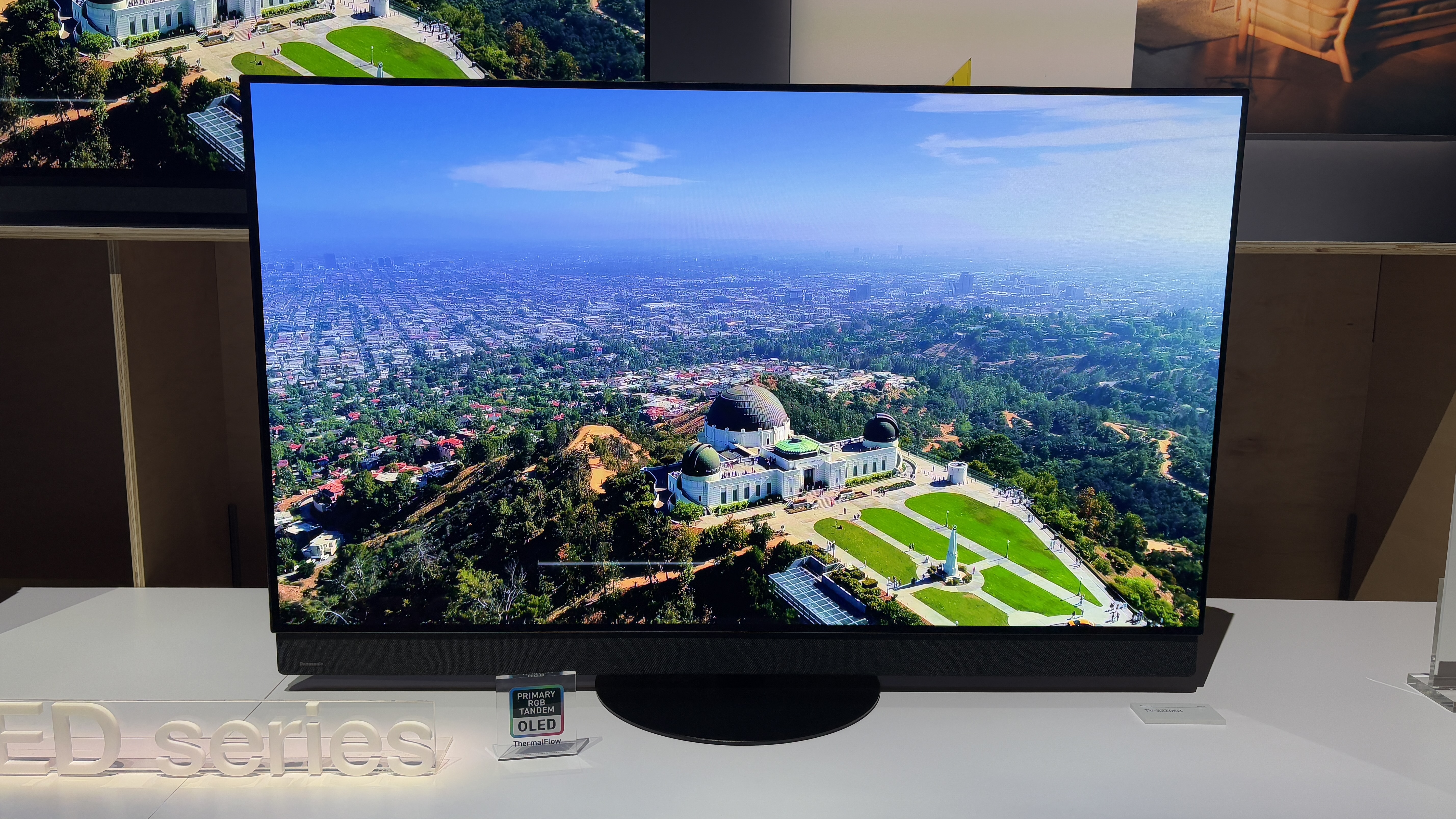
The LG G5 continues the company's wall-mount-first approach, though with a significant change in strategy. Unlike its predecessor, which offered a stand-included G4S variant in certain sizes, no G5 model will include a stand as standard – it must be purchased separately. Sad times for those wanting flexible positioning options out of the box.
The Panasonic Z95B takes a more versatile approach (hooray!), including a swivel stand as standard. However, the most significant design element is its completely redesigned chassis, which has been developed to accommodate the new ThermalFlow cooling system. This cooling solution, which Panasonic says draws inspiration from F1 racing car aerodynamics, uses dedicated exhausts at the top and bottom of the device to maintain optimal operating temperatures. The new design creates a more uniform thickness throughout the set, moving away from the boxed-out appearance of previous models that housed separate speaker enclosures.
As for the remotes, LG has developed a new Magic Remote featuring a slimmer, longer design that removes traditional number buttons in favour of new AI and accessibility controls. It won’t, however, be available in all territories at launch, with UK users seemingly stuck with the older design for now. The Panasonic Z95B comes with its standard Fire TV remote control, with a handy MyApp button providing one-touch access to your favourite apps.
Overall, there’s not much to separate the aesthetics of both sets. LG’s exclusion of an included stand might annoy you enough to swing towards the Panasonic, or you might prefer the slightly cleaner front of the G5 compared to the bottom speaker edge of the Z95B. Design is subjective, but we’d have no qualms with either taking up the prime spot in our living rooms.
LG G5 vs Panasonic Z95B: panel tech and picture
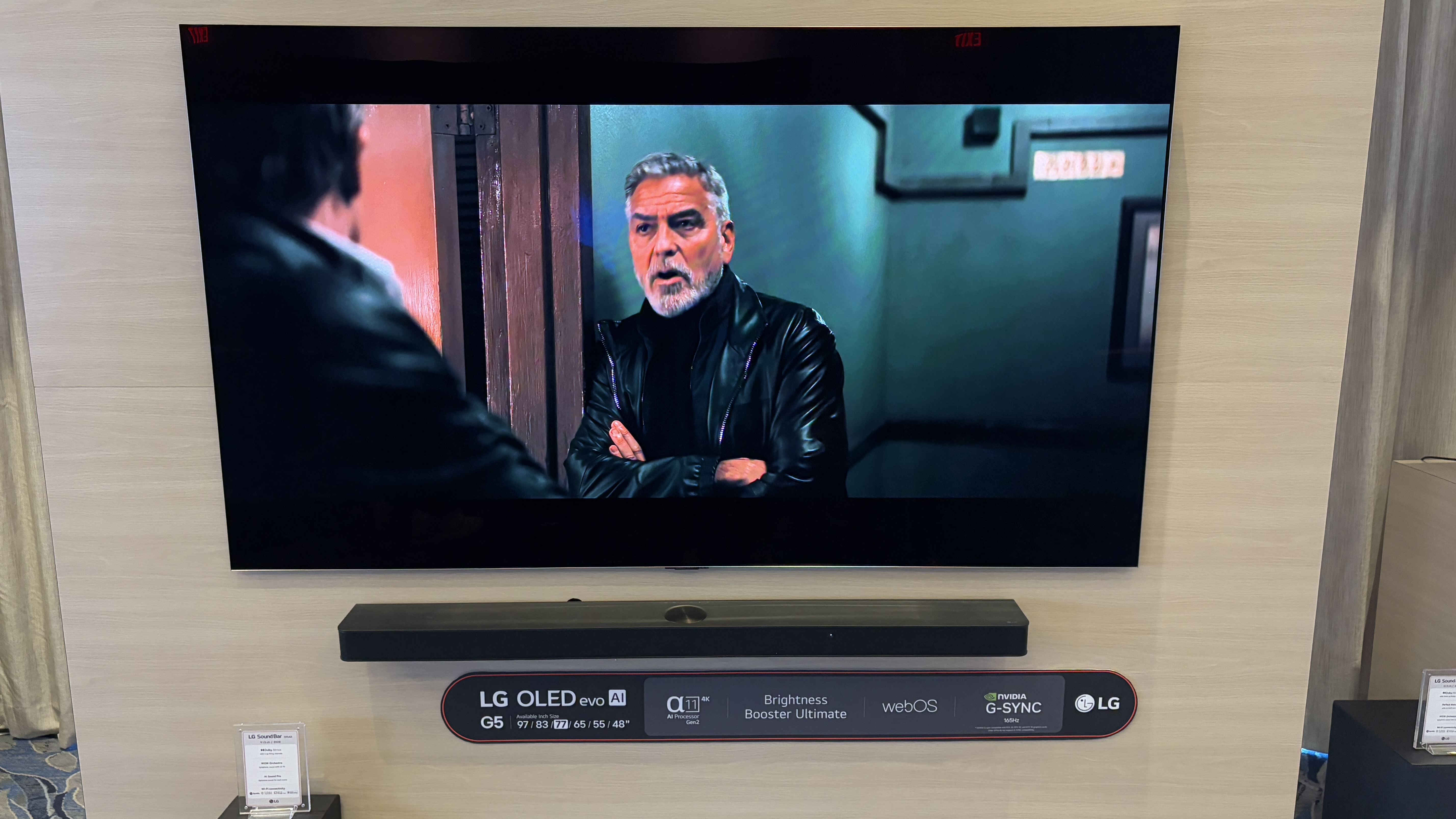
Design aside, it’s the screen performance that trumps all. The most significant upgrade in both TVs is LG Display's revolutionary new fourth-generation four-stack OLED panel, which is a fundamental shift in OLED design. While earlier OLED panels combined red, green, and yellow elements in a single layer sandwiched between two blue layers, this new design uses completely separate red and green layers positioned between two blue layers. The end result is enough of an improvement that LG Display has abandoned its praised MLA technology used in last year’s panels altogether, thanks to the increased brightness offered by the new four-stack tech.
LG Display's specifications for this new panel are impressive, claiming peak brightness capabilities of 4,000 nits – a 33 per cent increase over the third-generation MLA panel used in last year's G4. Colour brightness can also reach up to 2,100 nits – a tasty 40 per cent improvement over previous panels. Despite these substantial increases in brightness, the four-stack structure actually improves energy efficiency by around 20 per cent for a 65-inch panel, thanks to enhancements to the power supply system.
The panel also incorporates new ultra-low reflection technology – a screen coating that blocks 99 per cent of both surface reflections and light absorbed and reflected inside the panel. LG Display states this enables the panel to maintain perfect blacks and 100 per cent colour accuracy even in bright daylight conditions.
Though both the G5 and Z95B share the same panel tech, their approach is slightly different. LG's G5 aims to maximise the panel's full brightness potential, though real-world performance typically measures lower than theoretical maximums (hence our eagerly awaited real-world review). Panasonic's Z95B meanwhile, hopes to squeeze out the most consistent performance possible thanks to the aforementioned ThermalFlow cooling system.
On the processor front, LG is pairing its panel with its Alpha 11 Gen 2 processor, enhancing the picture through AI-driven processing. The system includes advanced AI Super Upscaling for lower resolution content, along with Dynamic Tone Mapping Pro for HDR optimisation. In the Panasonic camp, you’ll find an HCX Pro AI MK II processor powering its 4K Remaster Engine, which combines AI and mathematical models for improved picture quality and noise reduction, particularly with streaming content.
HDR support is another differentiator. While both sets handle HDR10, HLG and Dolby Vision formats, the Panasonic Z95B adds HDR10+ compatibility. It also includes Dolby Vision IQ with Precision Detail, working in conjunction with an ambient light sensor to adjust HDR performance based on room conditions. For gaming, the G5 supports Dolby Vision gaming at up to 165Hz, while the Z95B handles it at up to 144Hz.
LG G5 vs Panasonic Z95B: features and connectivity
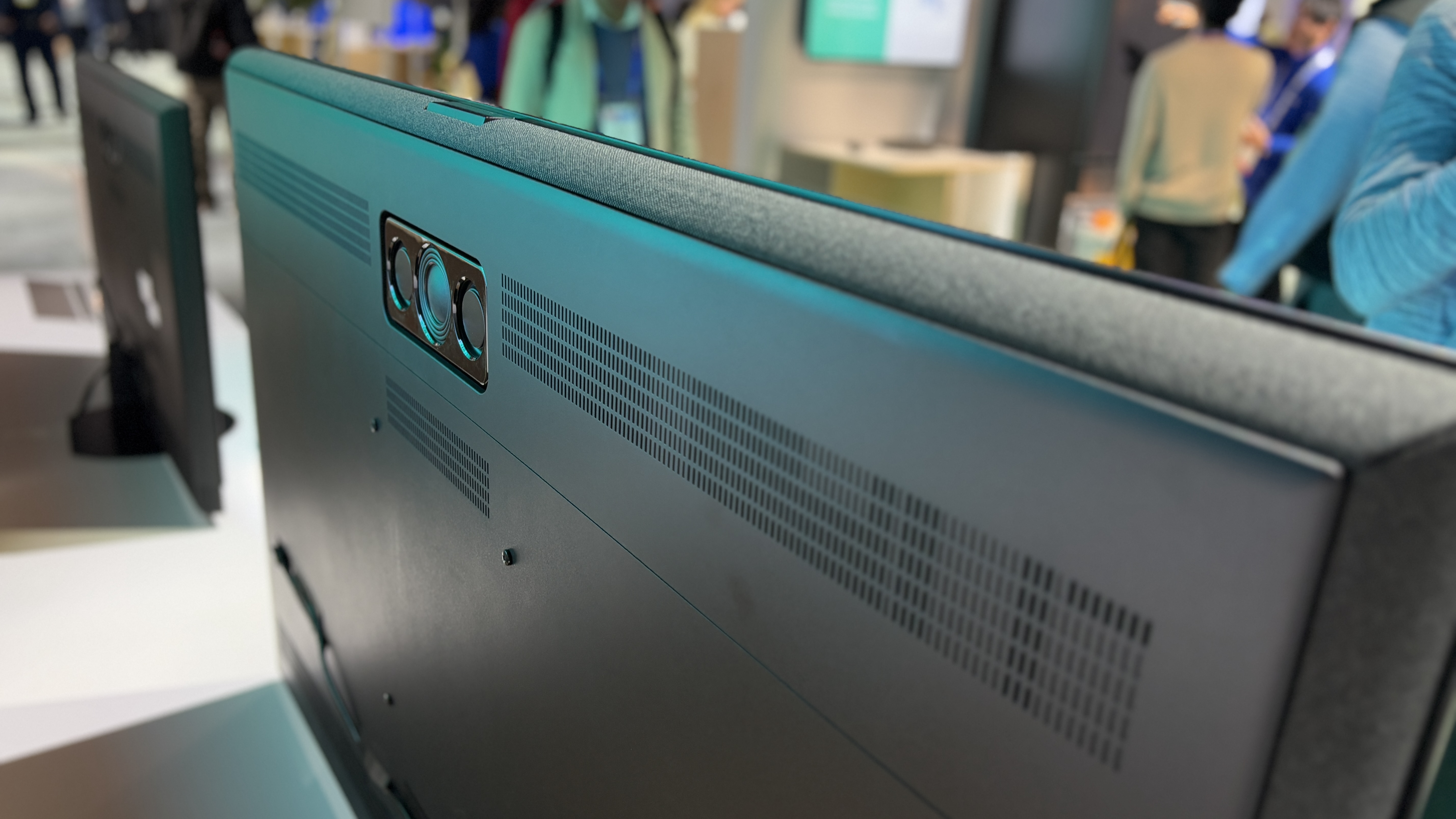
The LG G5's AI capabilities include user recognition through voice detection, automatically loading individual picture and sound preferences for different users. This extends to an AI-powered support system designed to help users optimise their viewing experience and troubleshoot common issues through natural language interaction. Whether or not you need yet another promise of overzealous AI gubbins thrown into your life, is up to you. We’re approaching this barrage of tech with tentative optimism, but our full review will reveal its usefulness in the real world.
As for the Z95B, it runs Amazon's Fire TV platform, introducing Prime Video Calibrated Mode along with professional calibration capabilities in the form of Calman and ISFccc support. Picture accuracy fans will also be pleased to hear that it also serves up pre-calibrated modes developed with Hollywood colourist Stefan Sonnenfeld. Needless to say, we’re looking forward to putting these finely tuned calibrations through their paces come review week.
Gamers with a beefy gaming PC might lean more towards the LG G5 , thanks to its support for refresh rates up to 165Hz (excluding the 48-inch and 97-inch models) and VRR support in the form of AMD FreeSync and Nvidia G-Sync across all four HDMI 2.1 ports. The Panasonic Z95B has a very respectable but slightly lower 144Hz refresh rate with FreeSync VRR support, but only two HDMI 2.1 ports. Both televisions support 4K/120Hz gaming on the latest generation consoles, with minimal latency.
LG G5 vs Panasonic Z95B: sound

On the audio side of things, the Panasonic Z95B introduces a comprehensive redesign of its Dolby Atmos speaker system. New line array side-firing and height speakers are now integrated directly into the TV's edges, departing from the previous boxed-out design approach. The subwoofer system has also received particular attention, with output increased from 20W to 30W, along with the addition of a passive radiator for enhanced bass response. Panasonic states that this new configuration doubles the soundstage width compared to its predecessor, with Technics engineers handling the audio tuning and implementing renewed spatial sound processing.
The LG G5, meanwhile, builds upon its predecessor's audio capabilities while introducing new refinements. The system retains Virtual 11.1.2-channel upmixing capabilities while adding sophisticated AI Sound Pro processing. A notable addition is the Voice Remastering feature, which uses AI to enhance dialogue clarity while maintaining the integrity of other soundtrack elements. The AI Sound Pro system can also analyse content in real time, optimising the audio profile while paying particular attention to dialogue enhancement and spatial audio processing. Given that we often recommend upgrading the standard built-in TV speaker experience with one of the best soundbars, we’ll only believe the audio hype from both models once we’ve tested them with our own ears.
LG G5 vs Panasonic Z95B: early verdict
Both the LG G5 and Panasonic Z95 have enough on-paper improvements to warrant getting excited. The new four-layer OLED panel technology could provide the best OLED experience to date, with potentially enough brightness to tackle even the brightest of rooms. Coupled with extensive gaming features including higher refresh rates and more HDMI 2.1 ports, improved sound, and plenty of software and processing smarts, this is shaping up to be a very competitive fight that’s currently too close to call.
Bookmark this page though, because once both models have made their way through our testing rooms, we’ll be updating this article with a definitive verdict. Stay tuned.
MORE:
LG G5 vs C5: what's new with these 2025 OLED TVs?
Hands on: Panasonic Z95B review
These are the most exciting TVs we saw at CES 2025
Get the What Hi-Fi? Newsletter
The latest hi-fi, home cinema and tech news, reviews, buying advice and deals, direct to your inbox.

-
StraightUP Reply
I have not bought a TV in years and am now looking for something quite excellent. I've been doing a ton of research and comparisons. I'm going to give my thoughts about which way I'm leaning, since you asked. I'm leaning heavily toward the Panasonic Z95b. I think there's no comparison. Here's why:What Hi-Fi? said:Two of 2025's most technically advanced TVs go head-to-head in the ultimate OLED head-to-head.
LG G5 vs Panasonic Z95B: which OLED TV should you buy? : Read more
The sound system in the Z95a was stellar, according to Digital Trends' Caleb Denison. And the newer Z95b has improved upon that again with an even better woofer. He described the Z95a's sound as amazing, and could hardly believe the 3d sound he experienced when listening to the TV from a couch several feet away. TV's never have good sound systems, but the Panasonic is an exception.
Both TV's using LG's new 4-layer OLED tech, but Panasonic designed some type of air cooling method, which I think will be hands down better than thermal plating, or however it is described by LG. The Panasonic's air flow might increase noise, though. But more than likely will never be heard when listening to the audio of a movie.
The specs for Gaming are wasted on most people, I think, including myself. I wish I did not have to pay for them. I want to watch Movies and TV shows. That's it.
The Panasonic stand that spins is a great asset. I do not intend to hang the TV, and I'm glad the included stand also spins.
I do not have much experience with the top 4 brands' OS, except for a Samsung purchased in 2016! I read countless reviews by people on all the TV brands and the complaints about the OS are common. The Tizen seems to get the best reviews, though there are still complaints about it. Some people have learned to use LG's WebOS and really dig it, while others do not. Amazon's FIRE OS is not liked by many, but on the higher end TV's, they seem to think it is pretty decent. The CPU chip on the higher end TV's probably helps all the OS's significantly.
Since I use Amazon Prime exclusively, I guess the Fire OS should be better for me.
The worst thing about any and all TV's now seem to be the license agreements you have to agree to. Since I already have an Amazon Prime account, I'm hoping that Panasonic does not force me to have to agree to anything else.
I'll probably go with a 55". It's unfortunate that I have to wait until Fall (October/November?) to be able to order the TV.
